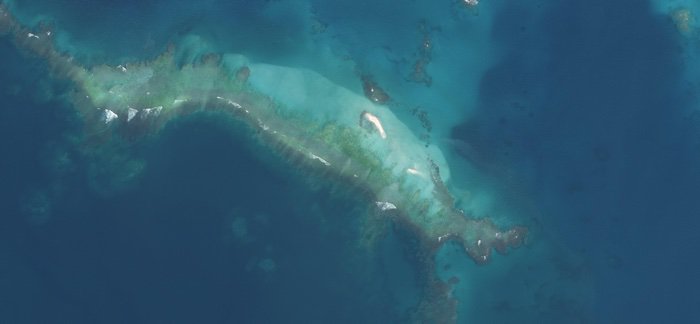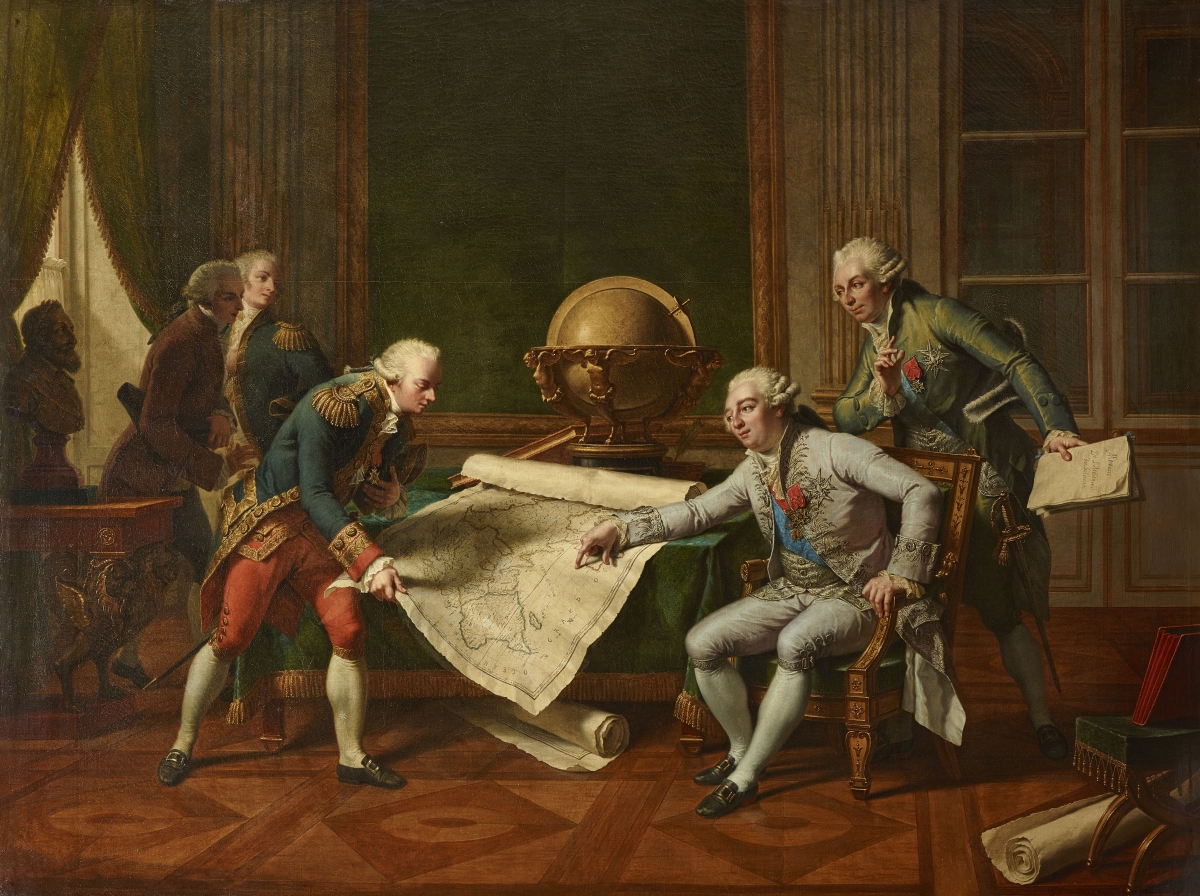
Latest:
Climate change, anyone?
1786-2018
232 years after La Pérouse’s discovery of Necker Island and the French Frigates Shoals including East Island, Hawai’i… Another Pacific Ocean TRAGEDY…. E.J.

On November 4, 1786, French explorer Jean-François de Galaup, comte de la Pérouse, in command of two vessels, La Boussole and L’Astrolabe on his ill-fated Pacific expedition, was westward bound from California when he discovered Necker Island and the French Frigates Shoals, the largest atoll in the Northwestern Hawaiian Islands, now part of the Papahānaumokuākea Marine National Monument, currently the largest marine conservation area in the world, about 550 miles northwest of Honolulu, Hawaii. Elisabeth Jenssen
One Hawaiian island completely wiped off the map; home to monk seals and turtles
Thursday, October 25th 2018, 12:47 PM HST by Lindsey Fukano. Photos taken before and after Hurricane Walaka show the east island completely submerged after it took a beating from the powerful storm surges of the Category 5 hurricane.
Scientists research opihi populations in pursuit of sustainable harvests

https://www.papahanaumokuakea.gov/
A Category 5 hurricane wiped an entire Hawaiian island off the map
By Christina Maxouris and Doug Criss, CNN Updated 1815 GMT (0215 HKT) October 25, 2018
(CNN) Hawaii’s East Island is no longer on the map.
The island, located about 550 miles northwest of Honolulu, is part of a chain of small island groups in Papahānaumokuākea Marine National Monument. When the chain was swept by powerful storm surges from Hurricane Walaka earlier this month, East Island was submerged.
The island was uninhabited, but scientists are worried because it was a refuge for two of the most endangered animals in the world: the Hawaiian green sea turtle and the Hawaiian monk seal.
A paradise for animals
Almost 96{4d24daa5a359aa22e51c71c531e935ff229d31c7c5eb0da4885e362fa152ead6} of Hawaii’s green turtle population travels to the island chain, known as the French Frigate Shoals, for safe nesting during their breeding season, according to Chip Fletcher, an earth science professor at the University of Hawaii at Manoa.
“As we moved around the island this past July, every single step we had to be careful, because there was evidence of turtle nesting,” Fletcher told CNN. “But, thankfully, most of the eggs would have hatched and the hatchlings gone, by the time the hurricane hit.”
The Hawaiian monk seals — there’s only about 1,400 of them left in the world — spend most of their time on the island lying under the sun and resting on its beaches. Fletcher says they’re usually able to navigate their way around during storms like this one.
“So we have some reason to be optimistic that it wasn’t totally devastating,” he said. “But the final assessment will rest with the biologists.”
So why did it go underwater?
The islands in that area are mostly tiny slices of sand and gravel sitting on top of a submerged, extinct volcano.
“Our understanding is that these islands are formed as sea level falls,” Fletcher said. “Sea levels are rising right now so the fundamental basis for forming these islands no longer exists.”
Fletcher says East Island may remain underwater partly due to climate change.
“Sea level is rising around the world, these low sandy islands become more and more vulnerable as the ocean rises,” he said.
“If the ocean was rising very slowly, there’s the potential that these islands could adapt, but rapid sea level rise, as is happening due to global warming, puts these islands out of equilibrium.”
Hurricane Walaka was a powerful Category 5 storm with winds in excess of 157 mph. It was one of several big storms to barrel through the Pacific this year. Fletcher says warmer weather and warmer water have a lot to do with why storms are getting stronger. And it’s likely we’ll see other islands going underwater, too.
“The probability of something like this happening has risen and will continue to rise as we warm the ocean and atmosphere,” he said.
The Papahānaumokuākea Marine National Monument’s website states there is a marine debris team working in the area that will stop at French Frigate Shoals and conduct a “preliminary assessment of the damage and impacts to wildlife.”
Links: https://edition.cnn.com/2018/10/25/us/hawaii-island-hurricane-gone-wxc-trnd/index.html
https://www.civilbeat.org/2018/10/this-remote-hawaiian-island-just-vanished/
https://www.civilbeat.org/2018/10/photo-essay/
https://www.francaisdeletranger.org/blog/mdfdeusa-may-you-rest-in-peace-pierre-pierrot-moulin/
« Oh, mon Dieu, elle a disparu ! » : l’île hawaïenne engloutie après le passage d’un ouragan
Si aucun humain n’y vivait, East Island abritait notamment des espèces menacées comme des phoques moines et des tortues vertes d’Hawaï.
LE MONDE | • Mis à jour le
Le territoire des Etats-Unis a rétréci depuis quelques jours. Une île hawaïenne, East Island, a été rayée de la carte après avoir été engloutie par les eaux à la suite du passage d’un ouragan au début du mois. L’annonce en a été faite lundi 22 octobre par des scientifiques fédéraux qui se fondent sur des images satellites de l’organisme public américain U.S. Fish and Wildlife Service.
« J’ai eu un sacré moment de panique. Je me suis dit “oh, mon Dieu, elle a disparu !”, a témoigné Chip Fletcher, climatologue à l’université d’Hawaï. L’île avait probablement entre 1 000 et 2 000 ans. C’est une fissure de plus dans le mur de notre écosystème, qui est en train de tomber en ruine. » M. Fletcher et son équipe de chercheurs étaient en train de faire des recherches sur East Island au moyen de drones et de prélever des échantillons de sable et de coraux pour déterminer l’âge de l’île. L’objectif était d’évaluer ses perspectives face au changement climatique.
« Nous voulions surveiller l’île et nous sommes donc déçus qu’elle ait disparu, mais d’un autre côté, nous avons appris que ces îles sont beaucoup plus à risque que nous ne le pensions. Je pensais que l’île serait là pour une dizaine ou une vingtaine d’années, mais elle est beaucoup plus fragile que je ne le pensais. »
Phoques moines et tortues vertes
Le site d’investigation Honolulu Civil Beat a diffusé sur Twitter des images satellite de l’île avant et après le passage de l’ouragan Walaka au début du mois.
East Island était, jusqu’à sa disparition, le deuxième plus grand îlot du banc de sable de la Frégate française. Ce bout de terre de 44 000 m2 était situé dans la réserve de Papahānaumokuākea. Si aucun humain n’y vivait, l’île avait toutefois un rôle primordial dans la biodiversité. Elle abritait notamment des espèces menacées comme des phoques moines et des tortues vertes d’Hawaï.